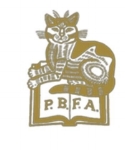La Belle Époque
La Belle Époque (French for "Beautiful Era") was a period of Western European history. It was a time from the end of the Franco-Prussian War in 1871 to around the outbreak of World War I in 1914. Occurring during the era of the French Third Republic, it was a period characterized by optimism, regional peace, economic prosperity and technological, scientific and cultural innovations. During this period, especially in Paris, the arts flourished. Many masterpieces of literature, music, theatre, and visual art gained recognition during The Belle Époque, and the era was named in retrospect, when it began to be considered, a "golden age" in contrast to the horrors of World War I.
Moreover it was a worldwide event: in the United Kingdom, La Belle Époque overlapped with the late Victorian era and the Edwardian era. In Germany, La Belle Époque coincided with the reigns of Kaiser Wilhelm I and II, in Russia with the reigns of Alexander III and Nicholas II, and in the newly-rich United States, the comparable epoch was dubbed “The Gilded Age”.
La Belle Époque was the era of art, and much of this collection is artistic. The golden age was the first (and for some, last) episode of artists such as Van Gogh, Renoir , Rousseau and Henri Matisse. But, also this was a time for a young Pablo Picasso. This was a post-Impressionist time, with early Modernism, Cubism and Abstraction emerging. One of the notable styles to emerge from La Belle Époque was ‘Art Nouveau’.
Click the image below to view our catalogue - La Belle Époque. Thus brochure is a preview of a catalogue that the Bibliomaniacs will present in the autumn of 2016. It is of a distinguished private collection of books reflecting La Belle Époque.




